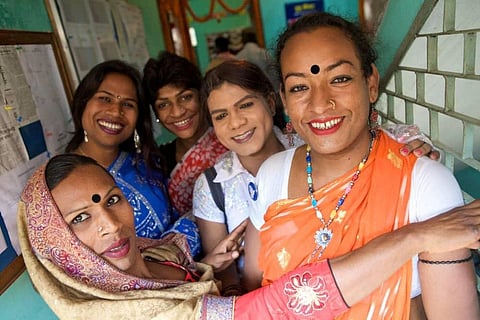It is believed that when Rama was exiled for 14 years, many men and women followed him into the forests. He, however, asked the men and women to go back to their respective lives. After the men and women had left, the eunuchs were left, and they refused to go back. Happy with their devotion, Rama blessed them with the power to confer blessings on during auspicious occasions such as childbirth, inauguration etc. The practice is still followed as many houses where babies are born are visited by eunuchs who sing, and dance and shower their blessings in exchange of money.






